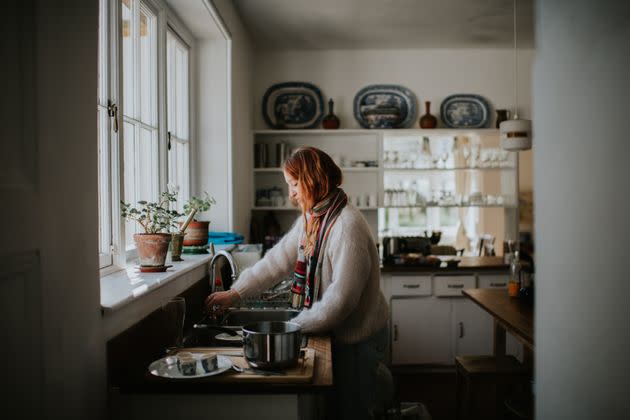This 1 Very Common Kitchen Item Carries More Bacteria Than Your Toilet

It’s where we prepare and store food, so our kitchens do need to be as clean as possible but the part of it that’s actually the most filled with bacteria isn’t actually an appliance, according to one doctor.
Magnet Trade worked with Dr Gareth Nye, Programme Lead for Medical Science, to learn more about all things bacteria and the doctor issued a warning against using one item entirely.
The kitchen item that harbours the most bacteria
Dr Nye warned that, actually, the most bacteria-filled item in the kitchen is dishcloths!
Speaking about a study, the doctor revealed: “90% of UK dishcloths were considered heavily contaminated with bacteria compared with 20% of toilet flush handles.
“The toilet fairs better than other kitchen areas such as the kitchen tap and worktop.”
Yikes.
Overall, Dr Nye recommends not using dishcloths at-all, but, if you do, you must clean and store them properly. He said: “Recommendations are to not use them, but if you do, you should be washing thoroughly after each use and rinse with an anti-bacterial detergent every two days to kill harbouring germs.
“You should also change your dishcloth every few months.”
He added that, ideally, people should switch to antibacterial wipes to clean surfaces, particularly after preparing raw meat and poultry.
Dr Nye recommends storing dishcloths flat and dry, away from potential sources of bacteria.
How to wash dishcloths to make sure you remove bacteria
Wash dishcloths on a hot cycle of 90°C
Dr Nye said: “Ideally, to ensure all bacteria is removed you should wash dish cloths in a washing machine on a suitably high temperature, such as a hot cycle of 90°C.”
He added that, before washing, you should check the fibre content of your clothes as synthetic types won’t withstand high temperatures.
Make sure all food and dirt is removed
Dr Nye said: ”“If you wash and disinfect cloths by hand, make sure all the food and dirt has been removed by washing in hot soapy water before you disinfect them.
“After washing, you can disinfect by using boiling water or a disinfectant, following the manufacturer’s instructions.”
Allow the cloths to fully dry between cleans
Gareth advises homeowners: “You must also allow the cloths to fully dry between cleans”.
This is because cloths that are not dried properly can go on to harbour bacteria, eliminating the benefits of cleaning them in the first place.
Iron them before use
“Giving them a good iron before use is also a quick and effective way of sanitising them, as steam is great at killing harmful bacteria.”
Who knew!

